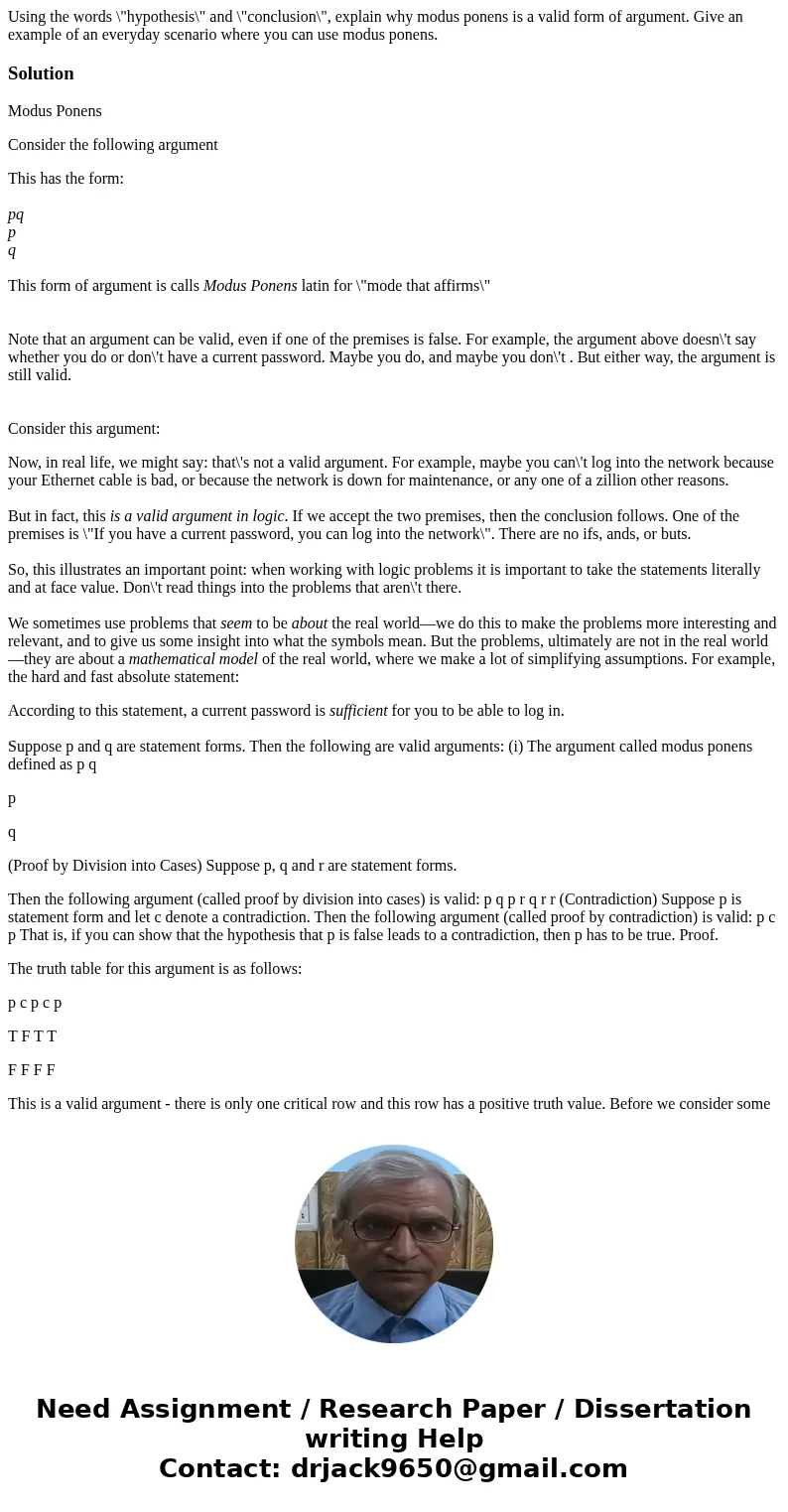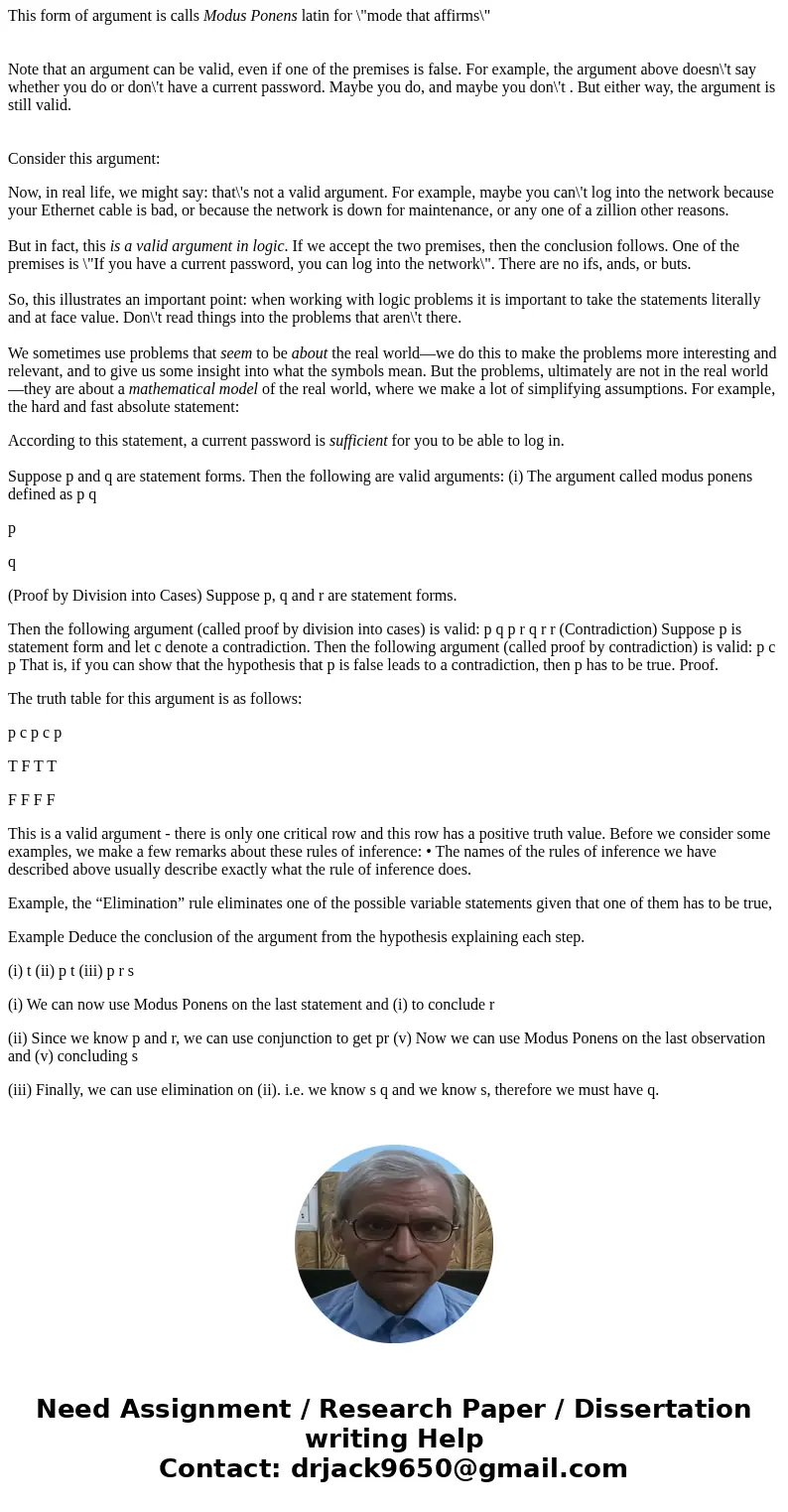Using the words hypothesis and conclusion explain why modus
Solution
Modus Ponens
Consider the following argument
This has the form:
pq
p
q
This form of argument is calls Modus Ponens latin for \"mode that affirms\"
Note that an argument can be valid, even if one of the premises is false. For example, the argument above doesn\'t say whether you do or don\'t have a current password. Maybe you do, and maybe you don\'t . But either way, the argument is still valid.
Consider this argument:
Now, in real life, we might say: that\'s not a valid argument. For example, maybe you can\'t log into the network because your Ethernet cable is bad, or because the network is down for maintenance, or any one of a zillion other reasons.
But in fact, this is a valid argument in logic. If we accept the two premises, then the conclusion follows. One of the premises is \"If you have a current password, you can log into the network\". There are no ifs, ands, or buts.
So, this illustrates an important point: when working with logic problems it is important to take the statements literally and at face value. Don\'t read things into the problems that aren\'t there.
We sometimes use problems that seem to be about the real world—we do this to make the problems more interesting and relevant, and to give us some insight into what the symbols mean. But the problems, ultimately are not in the real world—they are about a mathematical model of the real world, where we make a lot of simplifying assumptions. For example, the hard and fast absolute statement:
According to this statement, a current password is sufficient for you to be able to log in.
Suppose p and q are statement forms. Then the following are valid arguments: (i) The argument called modus ponens defined as p q
p
q
(Proof by Division into Cases) Suppose p, q and r are statement forms.
Then the following argument (called proof by division into cases) is valid: p q p r q r r (Contradiction) Suppose p is statement form and let c denote a contradiction. Then the following argument (called proof by contradiction) is valid: p c p That is, if you can show that the hypothesis that p is false leads to a contradiction, then p has to be true. Proof.
The truth table for this argument is as follows:
p c p c p
T F T T
F F F F
This is a valid argument - there is only one critical row and this row has a positive truth value. Before we consider some examples, we make a few remarks about these rules of inference: • The names of the rules of inference we have described above usually describe exactly what the rule of inference does.
Example, the “Elimination” rule eliminates one of the possible variable statements given that one of them has to be true,
Example Deduce the conclusion of the argument from the hypothesis explaining each step.
(i) t (ii) p t (iii) p r s
(i) We can now use Modus Ponens on the last statement and (i) to conclude r
(ii) Since we know p and r, we can use conjunction to get pr (v) Now we can use Modus Ponens on the last observation and (v) concluding s
(iii) Finally, we can use elimination on (ii). i.e. we know s q and we know s, therefore we must have q.


 Homework Sourse
Homework Sourse